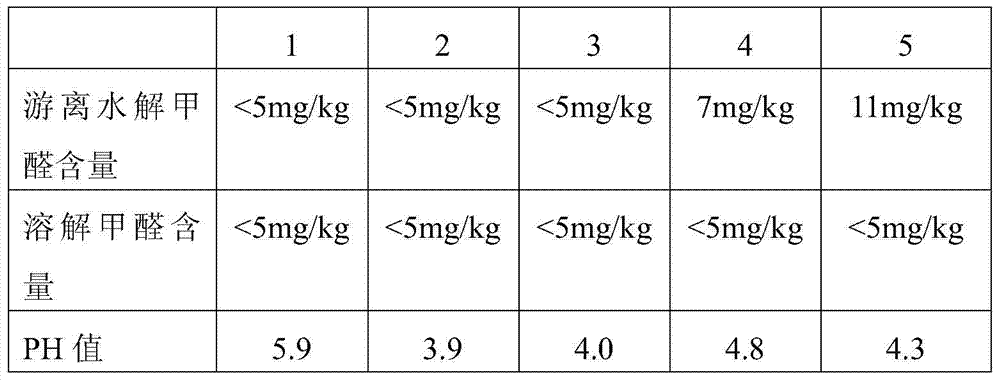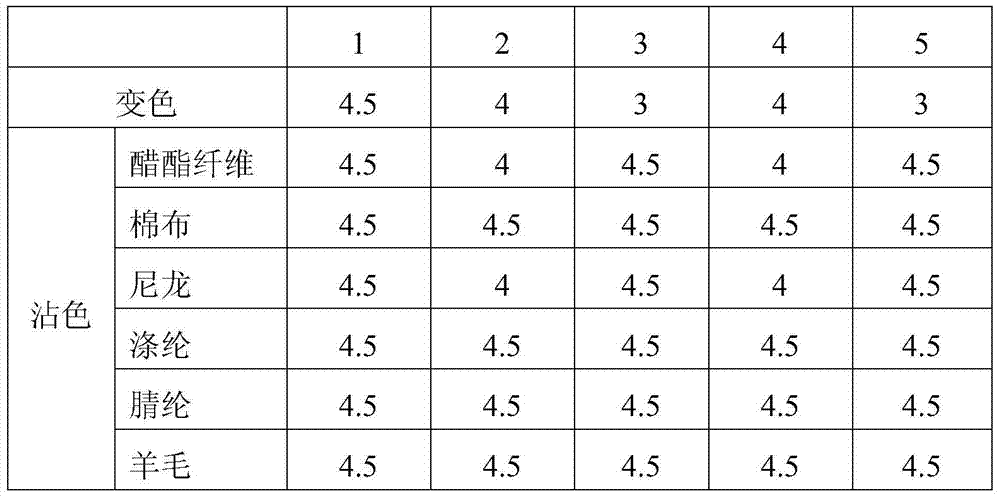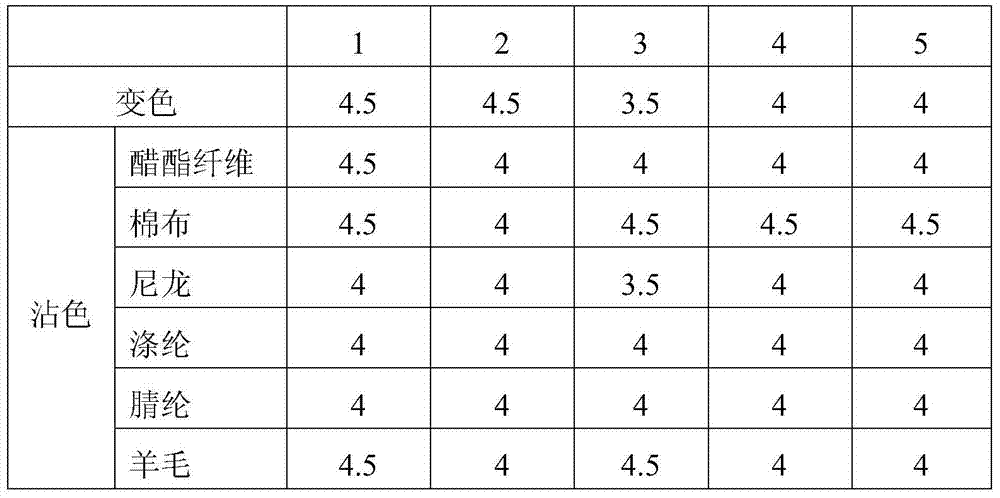The method of dyeing raw ecological cashmere with vegetable dyes
A dyeing method, cashmere technology, applied in dyeing, textiles and papermaking, etc., can solve the problems of not rich colors and color systems, low color fastness, insufficient supply, etc., achieve rich color types, low dyeing temperature, The effect of high color fastness
- Summary
- Abstract
- Description
- Claims
- Application Information
AI Technical Summary
Problems solved by technology
Method used
Image
Examples
Embodiment 1
[0022] Present embodiment provides a kind of method that cashmere fabric is dyed, and this method comprises the steps:
[0023] a. Wetting and modifying cashmere fabric;
[0024] B, dyeing the cashmere fabric obtained through the treatment in step a and then further fixing the color;
[0025] c, washing the cashmere fabric obtained through processing in step b.
[0026] Specifically, step a includes: putting 4kg of cashmere fabric into a dyeing vat, adding 80°C acidic soft water to the dyeing vat, and soaking the cashmere fabric in 80°C acidic soft water for 20 minutes to wet and modify the goat. cashmere fabric, then empty the dye vat; then add acidic soft water (20-25°C) at room temperature to the same dye vat to cool the wetted cashmere fabric to 20-25°C, and then raise the temperature in the dye vat to 35-40°C.
[0027] Step b includes preparing a dye solution and using the dye solution to dye and fix the cashmere fabric obtained through step a. Wherein, the dye soluti...
Embodiment 2
[0031] Present embodiment provides a kind of method that cashmere fabric is dyed, and this method comprises the steps:
[0032] a. Wetting and modifying cashmere fabric;
[0033] B, dyeing the cashmere fabric obtained through the treatment in step a and then further fixing the color;
[0034] c, washing the cashmere fabric obtained through processing in step b.
[0035] Specifically, step a includes: putting 3.125 kg of cashmere fabric into a dye vat, adding 80°C acidic soft water to the dye vat, and soaking the cashmere fabric in 80°C acidic soft water for 20 minutes to wet and modify Cashmere fabric, then empty the dyeing vat; then add acidic soft water (20-25°C) at normal temperature to the same dyeing vat to cool the wetted cashmere fabric to 20-25°C, then increase the temperature in the dyeing vat to 35-40°C.
[0036] Step b includes preparing a dye solution and using the dye solution to dye and fix the cashmere fabric obtained through step a. Wherein, the dye solutio...
Embodiment 3
[0040] Present embodiment provides a kind of method that cashmere fabric is dyed, and this method comprises the steps:
[0041] a. Wetting and modifying cashmere fabric;
[0042] B, dyeing the cashmere fabric obtained through the treatment in step a and then further fixing the color;
[0043] c, washing the cashmere fabric obtained through processing in step b.
[0044] Specifically, step a includes: putting 8.3kg of cashmere fabric into a dye vat, adding 80°C acidic soft water to the dye vat, and soaking the cashmere fabric in 80°C acidic soft water for 20 minutes to wet and modify Cashmere fabric, then empty the dyeing vat; then add acidic soft water (20-25°C) at normal temperature to the same dyeing vat to cool the wetted cashmere fabric to 20-25°C, then increase the temperature in the dyeing vat to 35-40°C.
[0045]Step b includes preparing a dye solution and using the dye solution to dye and fix the cashmere fabric obtained through step a. Wherein, the dye solution is...
PUM
 Login to View More
Login to View More Abstract
Description
Claims
Application Information
 Login to View More
Login to View More - R&D
- Intellectual Property
- Life Sciences
- Materials
- Tech Scout
- Unparalleled Data Quality
- Higher Quality Content
- 60% Fewer Hallucinations
Browse by: Latest US Patents, China's latest patents, Technical Efficacy Thesaurus, Application Domain, Technology Topic, Popular Technical Reports.
© 2025 PatSnap. All rights reserved.Legal|Privacy policy|Modern Slavery Act Transparency Statement|Sitemap|About US| Contact US: help@patsnap.com



